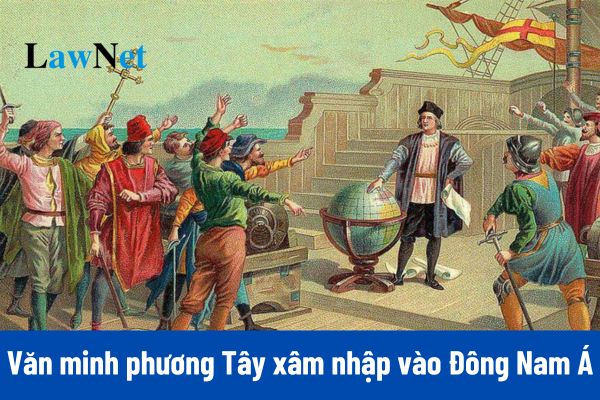When did Western Civilization penetrate Southeast Asia? What are the characteristics of History at the upper secondary level in Vietnam?
When did Western Civilization penetrate Southeast Asia?
Western civilization penetrated Southeast Asia from the 16th to the 19th century. As European powers such as Portugal, Spain, the Netherlands, England, and France expanded their maritime, trade, and later colonial activities in the region. This process spanned multiple stages, from the establishment of trade posts in the 16th–17th centuries to nearly complete colonial control of Southeast Asia by the 19th century. This influence only ended when countries in the region gained independence in the 20th century.
During the 16th - 19th centuries, Western civilization gradually penetrated Southeast Asia. The introduction of Western civilization brought many new elements to Southeast Asia, such as religion, language, material culture forms, humanistic ideas, etc.
Note: The content is for reference only!

When did Western Civilization penetrate Southeast Asia? What are the characteristics of History at the upper secondary level in Vietnam? (Image from the Internet)
What are the required outcomes regarding the Chapter of History and Historiography in the 10th-grade History curriculum in Vietnam?
Under the General Education Program for History issued with Circular 32/2018/TT-BGDDT, the required outcomes regarding the Chapter of History and Historiography in the 10th-grade History curriculum in Vietnam are stipulated as follows:
- Present the concept of history.
- Distinguish between actual history and history as perceived by humans through specific examples.
- Explain the concept of historiography.
- Present the research subjects of historiography through specific examples.
- State the functions and tasks of historiography through specific examples.
- State the significance of some fundamental principles of historiography: objectivity, honesty, progressiveness.
- Distinguish between sources of historical documentation: writing, historical artifacts, etc.
- State some basic methods of historiography: historical method, logical method, historical presentation by chronological and synchronic methods, and interdisciplinary approach. Begin to apply some basic methods of historiography through specific exercises (at a simple level).
- State the role and significance of historical knowledge in the lives of individuals and modern society through specific examples.
- Explain the necessity of lifelong learning of history.
- Know how to collect, gather, and process information and historical materials for learning and discovering history.
- Apply historical knowledge and lessons to explain current domestic and global issues, and practical life issues (at a simple level).
- Show interest, and love, and participate in activities to explore the history and culture of Vietnam and the world.
What are the characteristics of History at the upper secondary level in Vietnam?
According to the General Education Program issued with Circular 32/2018/TT-BGDDT, the characteristics of History at the upper secondary level in Vietnam are stipulated as follows:
- History is a subject belonging to the group of Social Sciences, selected based on career orientation at the upper secondary level.
- History aims to help students form and develop historical capabilities, a component of scientific capacity, while also contributing to the formation and development of the key qualities and general abilities identified in the overall program.
- History plays a leading role in educating patriotism, national pride, historical traditions, and national culture. It helps students recognize and apply historical lessons to solve real-life problems, develop vision, and consolidate human values, community spirit, tolerance, and compassion; contributing to forming and developing the qualities of Vietnamese citizens, and global citizens in the era's developmental trend.
- History forms and develops historical thinking, systematic thinking, critical thinking, skills in exploiting and using historical sources, recognizing, and presenting history logically across different times and spaces, and connecting the past with the present.
- History helps students recognize the scientific and practical value of history in modern social life, fostering an understanding and love for national and human history and culture; guiding students towards career choices such as social and humanities research, diplomacy, management, tourism activities, cultural industries, information, and communication, etc.
- The general education program for History systematizes and consolidates general historical knowledge at the basic education stage while helping students delve deeper into core historical knowledge through subjects and topics about world history, Southeast Asian history, and Vietnamese history. The teaching methods of History are implemented based on fundamental historical principles and modern educational methods.

